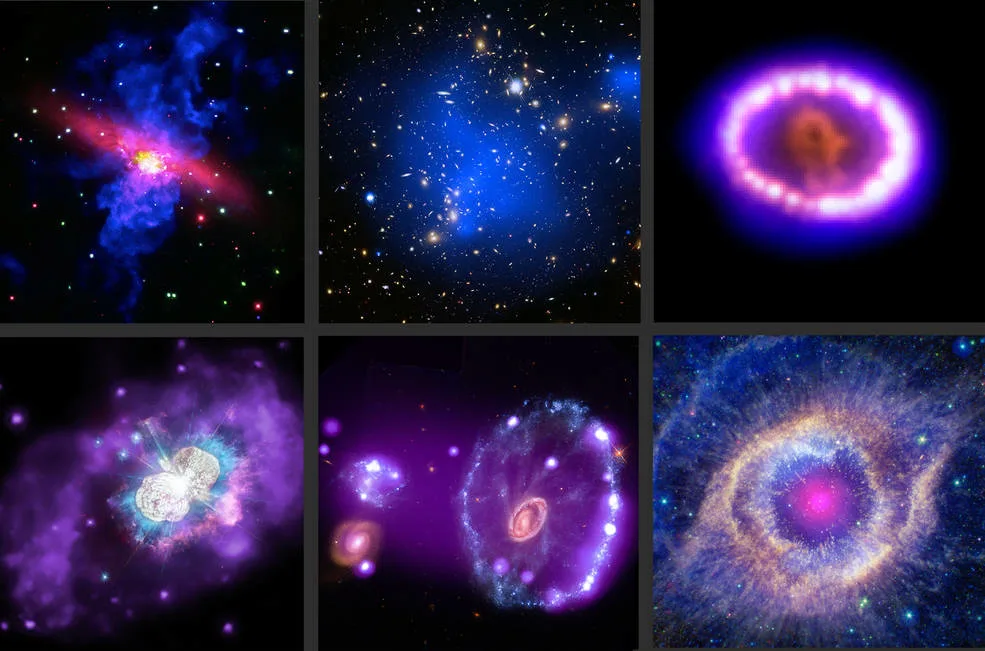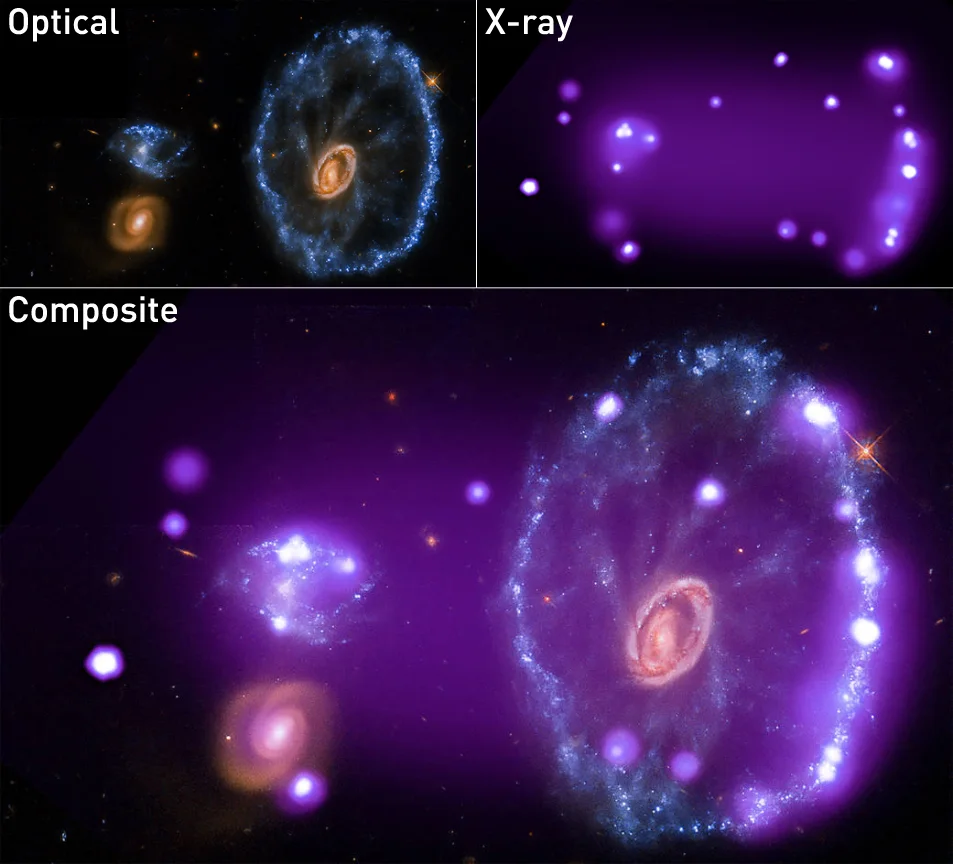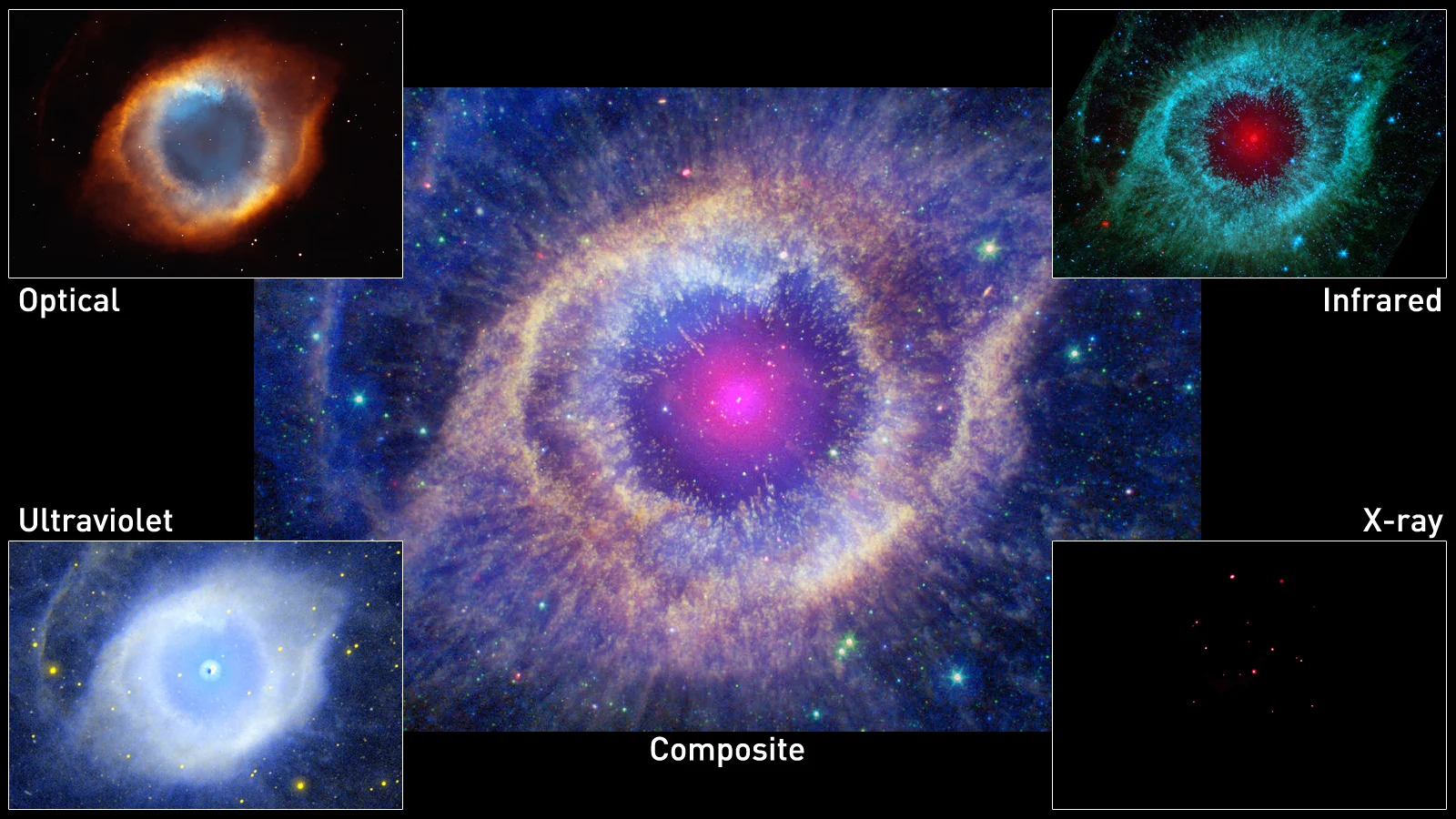
NASA releases cosmic treasure trove that reveals the 'invisible' universe
Combining the visible and invisible allows us to better understand the science of the universe
A new image archive just released by NASA allows the public to view the cosmos as they've never seen before.
Gazing out into the universe, there are many wondrous sights to behold. Unfortunately, even with the best telescopes available to us on the ground, we are limited in what we can see. The atmosphere - the very air we breathe - shields us against harmful x-rays from space. At the same time, though, it also renders invisible the portion of the universe those x-rays would otherwise reveal to us.

Artist's impression of the Chandra X-ray Observatory. Credit: NASA
NASA's Chandra X-ray Observatory has been up in space, orbiting Earth for over 21 years now, to allow astronomers to pull back the curtain on that unseen part of the cosmos.
Now, the agency has released a new public archive so that we, too, can marvel over what Chandra has revealed.
"Humanity has 'eyes' that can detect all different types of light through telescopes around the globe and a fleet of observatories in space. From radio waves to gamma rays, this 'multiwavelength' approach to astronomy is crucial to getting a complete understanding of objects in space," NASA said on its website. "This compilation gives examples of images from different missions and telescopes being combined to better understand the science of the universe."

Top row: galaxy Messier 82, the galaxy cluster Abell 2744, and the supernova remnant 1987A. Bottom row: the binary star system Eta Carinae, the Cartwheel galaxy, and the planetary nebula Helix Nebula. Credits: NASA/CXC/SAO, NASA/STScI, NASA/JPL-Caltech/SSC, ESO/NAOJ/NRAO, NRAO/AUI/NSF, NASA/CXC/SAO/PSU, and NASA/ESA
The above montage, new for 2020, covers a range of these multiwavelength observations.
In some cases, such as galaxy Messier 82 (top left), galaxy cluster Abell 2744 (top centre), and the Cartwheel Galaxy (bottom centre), they are a simple combination of visible imagery from the Hubble Space Telescope, paired with X-ray data from Chandra.
The others - supernova remnant 1987A (top right), Eta Carinae (bottom left), and the Helix Nebula (bottom right) - combine views from multiple observatories and telescopes, grouping multiple wavelengths from visible, ultraviolet, infrared, x-ray and even radio to provide the final image.

This composite of the Cartwheel Galaxy shows the two individual images - optical from Hubble and x-ray from Chandra - along with the combined data. Credit: X-ray: NASA/CXC; Optical: NASA/STScI
In the above example, the Hubble Space Telescope provides a spectacular view, all on its own. Chandra data, though, helped reveal why these galaxies looked the way they do.
According to the Harvard-Smithsonian Center for Astrophysics: "This galaxy resembles a bull's eye, which is appropriate because its appearance is partly due to a smaller galaxy that passed through the middle of this object. The violent collision produced shock waves that swept through the galaxy and triggered large amounts of star formation. X-rays from Chandra (purple) show disturbed hot gas initially hosted by the Cartwheel galaxy being dragged over more than 150,000 light years by the collision. Optical data from Hubble (red, green, and blue) show where this collision may have triggered the star formation"

This composite of the Helix Nebula shows the four components - optical from Hubble, infrared from the Spitzer Space Telescope, ultraviolet from the Galaxy Evolution Explorer and x-ray from Chandra, along with the combined image. Credit: X-ray: NASA/CXC; Ultraviolet: NASA/JPL-Caltech/SSC; Optical: NASA/STScI(M. Meixner)/ESA/NRAO(T.A. Rector); Infrared: NASA/JPL-Caltech/K. Su
Even with Chandra only adding in a small portion of the Helix Nebula's total image, above, its contribution still reveals essential parts of the entire puzzle.
According to the Harvard-Smithsonian Center for Astrophysics: "When a star like the Sun runs out of fuel, it expands and its outer layers puff off, and then the core of the star shrinks. This phase is known as a 'planetary nebula,' and astronomers expect our Sun will experience this in about 5 billion years. This Helix Nebula images contains infrared data from NASA's Spitzer Space Telescope (green and red), optical light from Hubble (orange and blue), ultraviolet from NASA's Galaxy Evolution Explorer (cyan), and Chandra's X-rays (appearing as white) showing the white dwarf star that formed in the center of the nebula"
For more of Chandra's invisible universe, visit the observatory's full image archive on the Harvard-Smithsonian Institute website.
